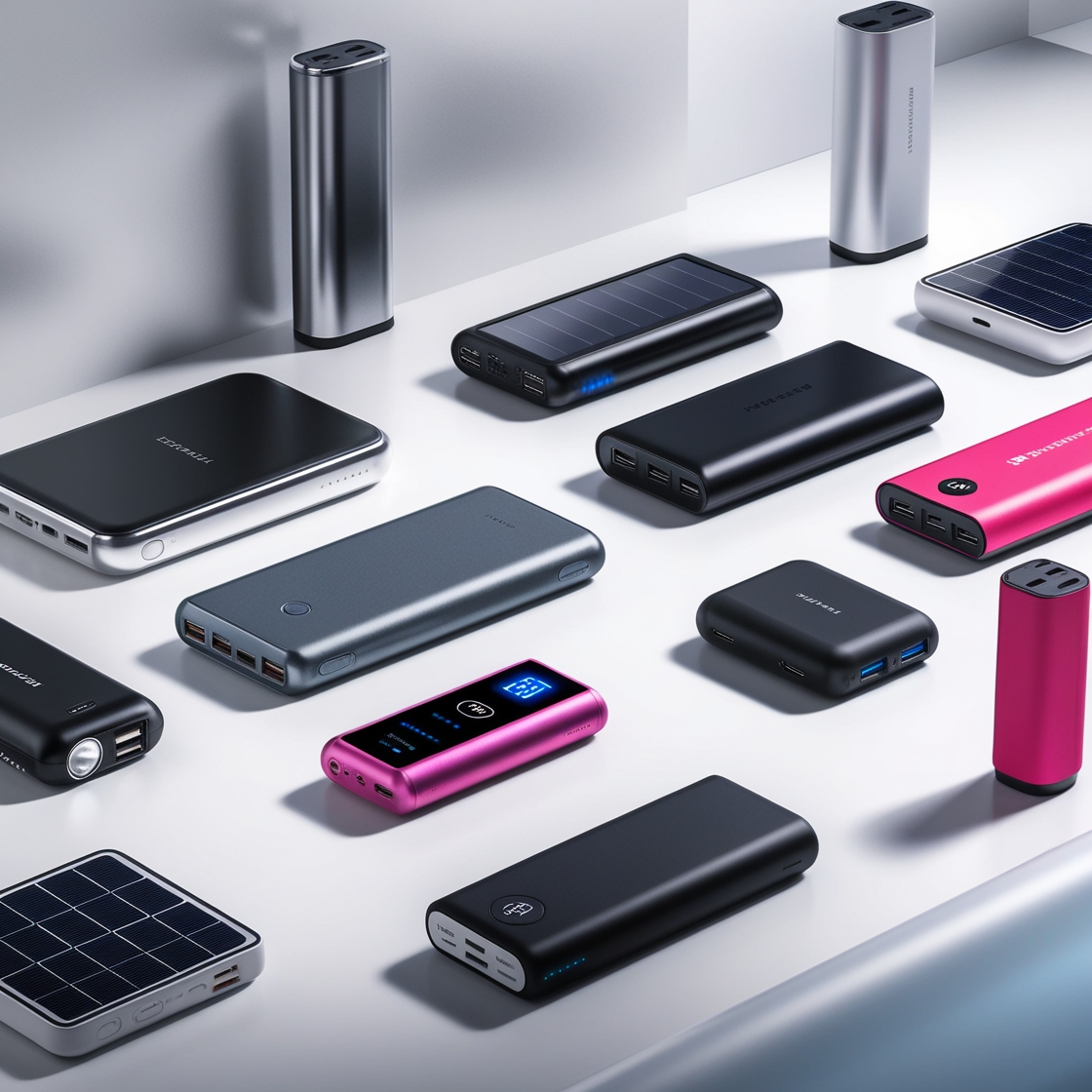Introduction: Why Portable Power Banks Matter
In our hyper-connected world, running out of battery can feel like a mini crisis. Whether you’re on a long commute, traveling, or simply out for the day, keeping your devices charged is crucial. Enter portable power banks—your trusty sidekick for all your charging needs. But what exactly are they, and how do you choose the right one? Let’s dive into the world of portable power banks!
What is a Portable Power Bank?
A portable power bank is a compact device designed to store electrical energy that can be used to charge electronic devices like smartphones, tablets, and even laptops. Think of it as a backup battery that fits in your pocket!
How Do Power Banks Work?
Power banks typically consist of a battery pack with multiple USB ports. When you charge the power bank, it stores energy that can later be transferred to your devices. Most power banks come with built-in circuitry to ensure safe and efficient charging.
Why You Need a Power Bank
- Stay Connected Anywhere
Whether you’re traveling, hiking, or just at the park, a power bank ensures your devices remain charged. It’s like having a mini generator with you! - Quick Charging Options
Many power banks now come with fast-charging technology, allowing you to power up your devices in record time. - Multiple Charges
Depending on the capacity, a power bank can charge your device multiple times before needing to be recharged itself.
Types of Power Banks
1. Standard Power Banks
These are your basic models, ideal for everyday use. They come in various capacities and are suitable for charging smartphones and tablets.
2. Solar Power Banks
Perfect for outdoor enthusiasts, solar power banks can harness sunlight to recharge themselves. They’re eco-friendly and great for camping trips.
3. Ultra-High Capacity Power Banks
For those who need to charge laptops or multiple devices, these power banks offer higher capacities. They can be bulkier but are worth it for heavy users.
4. Wireless Power Banks
These cutting-edge models allow for cable-free charging, perfect for compatible devices. Just place your phone on the power bank and watch it charge!
Key Features to Consider
1. Capacity
Measured in milliampere-hours (mAh), capacity determines how much charge the power bank can hold. A higher mAh means more power. For example:
- 10,000 mAh: About two full smartphone charges.
- 20,000 mAh: Multiple charges for tablets or larger devices.
2. Output Ports
Look for power banks with multiple USB ports if you plan to charge several devices simultaneously. Some models even include USB-C or Lightning ports.
3. Size and Weight
Choose a power bank that balances capacity with portability. You don’t want to lug around a heavy brick, but a tiny one might not have enough juice.
4. Charging Speed
Check for fast-charging capabilities. Quick Charge or Power Delivery technologies can make a huge difference in how quickly you can recharge your devices.
How to Use a Power Bank
- Charging the Power Bank
Connect the power bank to a power source using the included cable. Most will have LED indicators showing the charging status. - Connecting Your Device
Plug your device into the power bank using a USB cable. Ensure you select the correct output port if there are multiple options. - Monitoring Charge Levels
Keep an eye on the power bank’s charge level using the LED indicators. Recharge it when it’s running low to ensure it’s ready for your next adventure.
Top Brands to Consider
- Anker: Known for durability and fast charging.
- RAVPower: Offers a wide range of capacities.
- Aukey: Great balance of price and performance.
- Mophie: Stylish designs, often with wireless options.
Safety Tips for Using Power Banks
- Avoid Overcharging: Unplug once your device reaches 100% to prolong battery life.
- Use Quality Cables: Cheap cables can damage both your power bank and devices.
- Keep Away from Water: Most power banks are not waterproof.
Conclusion: Power Up Your Life!
Portable power banks are essential for today’s tech-savvy lifestyle. With the ability to keep your devices charged and ready, they’re invaluable whether you’re on a trip, at work, or just enjoying a day out. Investing in a good power bank can save you from the anxiety of a dying battery. So, which one will you choose to power up your adventures?
FAQs
1. Can I take a power bank on a plane?
Yes, but there are restrictions on capacity. Most airlines allow power banks under 100Wh (about 27,000 mAh).
2. How long does it take to charge a power bank?
It depends on the capacity and the input current. A standard 10,000 mAh power bank usually takes around 5-6 hours to charge fully.
3. Can I charge my laptop with a power bank?
Yes, but ensure the power bank supports laptop charging and has the appropriate voltage output.
4. What is the lifespan of a power bank?
Most power banks last between 300 to 500 charge cycles. With proper care, they can serve you for years.
5. Are there any safety concerns?
As long as you follow the manufacturer’s instructions and avoid physical damage, power banks are generally safe to use.
